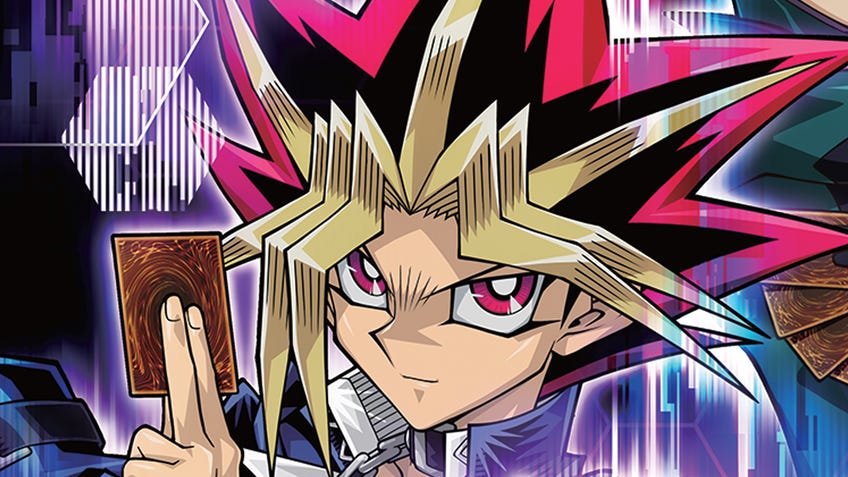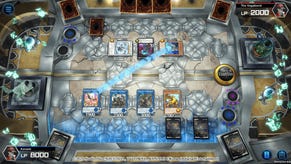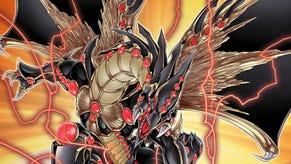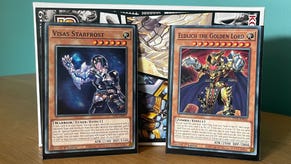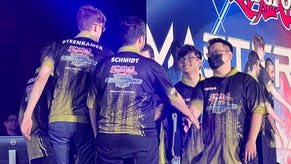How to play the Yu-Gi-Oh! Trading Card Game: A beginner's guide
Get to grips with the basics of the Yu-Gi-Oh! TCG, from card types and summoning to building your first deck.
Attention, duelists! You may remember the Yu-Gi-Oh! Trading Card Game from the Before Days of 2002, but if you’re reading this guide, you’re probably wondering: what ever happened to that old game? Surprisingly, it’s only gotten more popular, so there's no better time to learn how to play the Yu-Gi-Oh! TCG for beginners and returning fans alike.
How to play Yu-Gi-Oh! TCG
- How to play Yu-Gi-Oh! TCG
- How do you attack in Yu-Gi-Oh! TCG
- How many cards are in a Yu-Gi-Oh! deck
- Yu-Gi-Oh! TCG card types
- Yu-Gi-Oh! TCG field layout
- What does Chain mean in Yu-Gi-Oh?
Tournament attendance records are broken every year and, because publisher Konami continually releases both support for the decks of yesteryear and all-new playstyles, it’s never been easier to build a Yu-Gi-Oh! deck you enjoy and find people to play with.
Whether you’re a total novice or a returning duelist who could use a refresher, this guide to learning how to play the Yu-Gi-Oh! TCG will get you up to speed with the basics of the trading card game.
How to play Yu-Gi-Oh! TCG
The Yu-Gi-Oh! TCG is played in turns that follow a specific order of operations. To begin a duel, the decks are shuffled and each player draws an opening hand of five cards. Here’s a breakdown of the flow of a player turn.
Draw Phase: The first thing you do every turn is draw a card. The one exception is the first turn of the player who goes first, who doesn’t draw anything.
Standby Phase: This is when some card effects activate, as indicated by the cards’ text.
Main Phase 1: In this phase, you make most of your non-combat actions. These include the normal summon/set of one monster (in face-up attack position or face-down defense position respectively), any special summons you are allowed, the activation/setting of spells and traps, and changing battle positions of your monsters, including flip-summoning facedown defending monsters into the face-up attack position.
Battle Phase: This is where the magic happens. Each monster in attack position gets to attack once. When you attack, you compare your Atk value to the opponent’s Atk or Def value, whichever is relevant. Battle can go one of a few ways.
Main Phase 2: Just the same as Main Phase 1, preparing for your opponent’s turn.
End Phase: This is when some card effects activate, which you’ll see in the cards’ text. If you have more than six cards in your hand, discard until you have six.
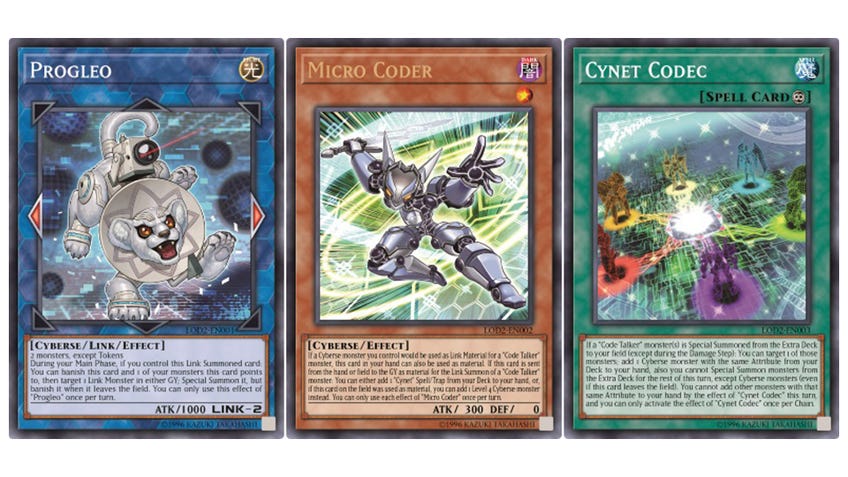
How do you attack in Yu-Gi-Oh! TCG?
Attacking a monster in attack position
- You attack a weaker monster in attack position: You destroy the monster and do damage directly to the opponent equal to the difference.
- You attack a monster of an equal strength in attack position: Both monsters are destroyed.
- You attack a stronger monster in attack position: Your monster is destroyed and you take damage equal to the difference.
Attacking a monster in defence position
- You attack a weaker monster in defence position: You destroy their monster.
- You attack a monster of an equal strength in defence position: Nothing happens.
- You attack a stronger monster in defence position: You take damage equal to the difference.
If your opponent doesn’t have any monsters, you deal your monster’s full Atk in damage.
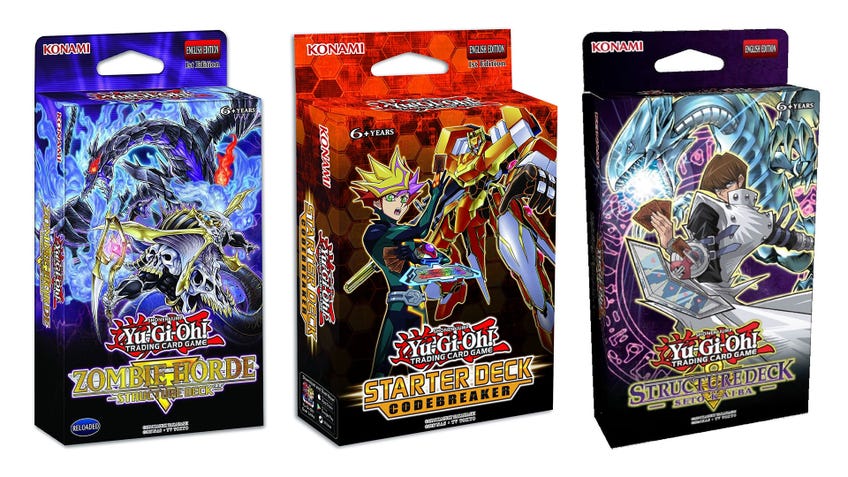
How many cards are in a Yu-Gi-Oh! deck?
You’ll bring to the table a Main Deck of 40 to 60 cards, and an Extra Deck of zero to 15 special monsters. You’ll know a monster belongs in the Extra Deck if it has “Fusion”, “Synchro”, “Xyz” or “Link” in bold on its card text.
In tournament play, where a round is decided by a best-two-out-of-three, you can also bring a separate Side Deck of up to 15 cards to swap in between duels to adapt to your opponent’s specific deck. You may have no more than three copies of any card between these three decks.
If building a deck from scratch sounds intimidating, you can pick up a pre-built Structure Deck for under £10/$10. Once you have a sense for how the deck plays, consider experimenting by getting two more of the same one. That way you can swap out the cards that weren’t carrying their weight with extra copies of the ones you wished you saw in your hand more often.
Yu-Gi-Oh! TCG card types
Now let’s look at some Yu-Gi-Oh! card types, beginning with the stars of the show: monsters. There’s a lot going on here, so let us walk you through the different parts of a Yu-Gi-Oh! monster card.
Monster cards
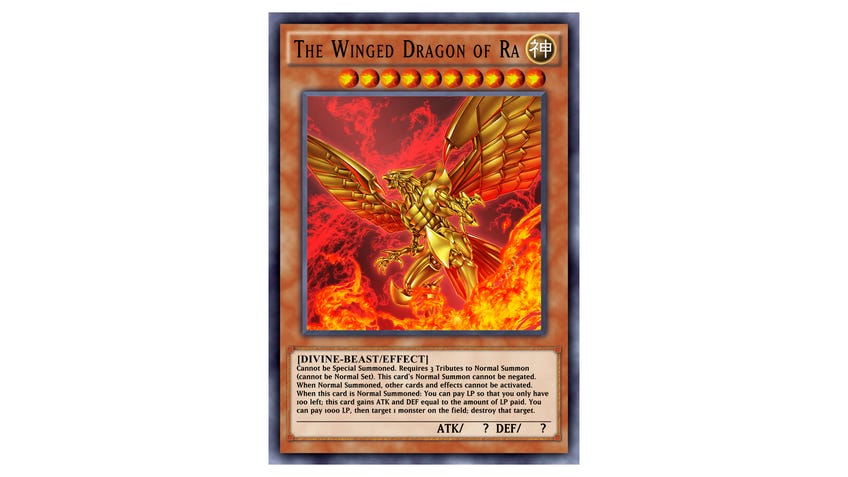
Name: Simple, but the interactions of many cards that specify a card name necessitate a mention.
Level: This determines how difficult a monster is to summon. A Level 1 to 4 monster requires no Tribute to summon. A Tribute is where you pick a monster on your field to send to the Graveyard (in other words, discard) before summoning your bigger monster. A Level 5 or 6 monster requires one Tribute, and a Level 7 or higher monster requires two Tributes. That said, defer to any specific summoning conditions a card might mention.
Attribute: Every monster belongs to one of seven Attributes. These only matter when a card’s text dictates.
Type: Every Yu-Gi-Oh! TCG monster belongs to one of twenty-five Types. Again, these only matter when a card’s text dictates.
Text: For Normal Monsters, this is flavour text. On Effect Monsters, it explains their effects or summoning conditions.
Atk: The relevant stat when the monster is in attack position (vertical), even if it is not the monster attacking.
Def: The relevant stat when the monster is in defence position (horizontal). You do not take damage from battles involving your Defence Position monsters.
Spell cards
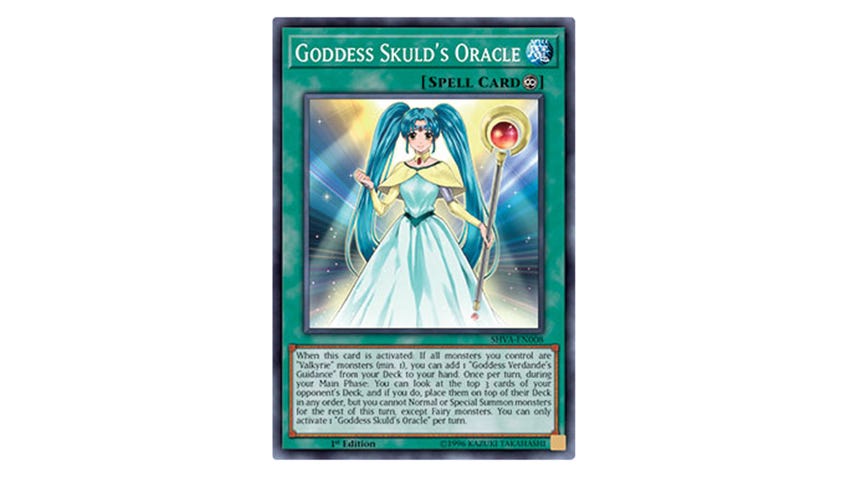
You won’t just be summoning monsters; you’ll also be supporting them with spells and traps. These cards are much simpler in design, but they come in a few subsets. Spells can be played face-up and activated immediately or Set - played facedown to be activated on a later turn. In the case of Quick-Play Spells, they can be activated as soon as your opponent’s turn!
- Normal Spells have no icon.
- Equip Spells have a plus icon, and are played by targeting an appropriate monster.
- Continuous Spells have an infinity icon, and remain on the field indefinitely.
- Quick-Play Spells have a lightning icon. If you Set them first, they can be activated on your opponent’s turn.
- Field Spells have a compass rose icon, and remain in the Field Spell Zone indefinitely.
Sold on spells? Check out our list of the best Yu-Gi-Oh spell cards.
Trap cards
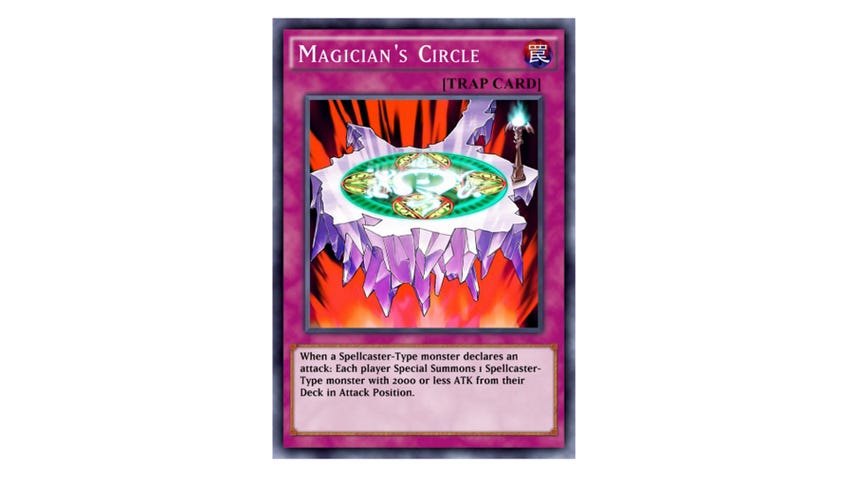
The last of the core card types is the trap. These get played facedown on your turn to activate on a later turn when their conditions are satisfied.
- Normal Traps have no icon.
- Continuous Traps have an infinity icon, and remain on the field indefinitely.
- Counter Traps have an arrow icon, and are uniquely fast - only another Counter Trap can be activated in response to them.
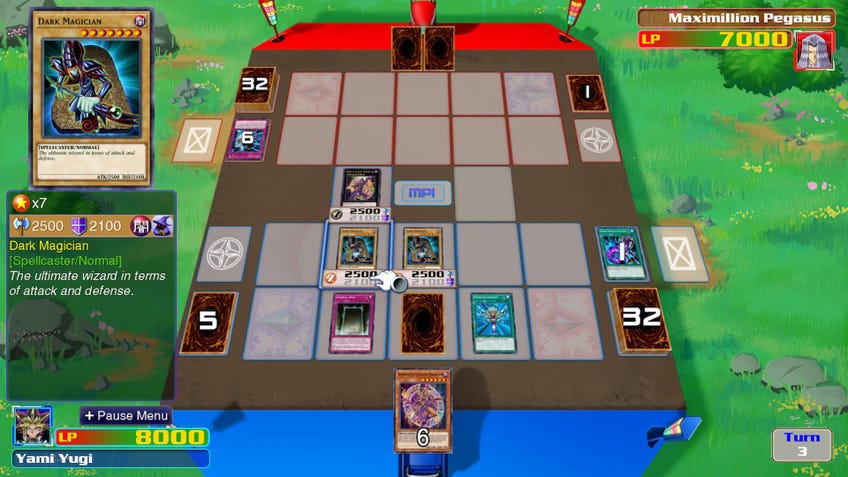
Yu-Gi-Oh! TCG field layout
Now that you’ve seen the soldiers and support, let’s check out the field of battle. In the Yu-Gi-Oh! TCG, orderly card placement isn’t just a matter of etiquette, it’s part of the strategy, so you may want to play on a labeled play mat until you’re used to it.
- The Deck Zone houses your Main Deck (your Side Deck is kept off the board until a duel ends). If your deck is depleted and you need to draw, you lose.
- The Graveyard (GY) is where cards are usually sent when they leave the field. But death isn’t always the end! Some cards have effects that can be activated in the Graveyard.
- The Extra Deck Zone houses your Extra Deck, its contents kept secret.
- The Field Zone is where you play Field Spells. Unlike other cards that remain on the field indefinitely, you can play another Field Spell by removing the one you currently have out.
- Main Monster Zones are where you’ll be summoning or setting most monsters. Monsters can be played in the face-up attack position or facedown defence position.
- The Extra Monster Zones are only for Monsters summoned out of the Extra Deck, which you always have access to if you can meet their summoning requirements.
- Spell & Trap Zones are where you’ll be activating or setting your spells and traps. The leftmost and rightmost spaces have a special interaction with Pendulum Monsters, which can act as Monsters or Spells.
There is no designated space for this, but cards can be “banished”, which you can think of as “double dead”. Of course, life always finds a way, and even banished cards might find their way back into play.
What does Chain mean in Yu-Gi-Oh?
Some cards in the Yu-Gi-Oh! TCG can be activated in response to something happening, and may even be responded to themselves with another card. This event is called a Chain.
As the chain builds, card effects do not resolve until both players agree they are done adding to it, at which point each effect in the chain resolves in backwards order, so the last card played is the first to resolve. Cards may only respond to another card if it has an equal or greater Spell Speed.
Spell Speeds are assigned as follows:
- Spell Speed 3: Counter Traps
- Spell Speed 2: Monsters with “Quick Effect” in their text. Quick-Play Spells, Non-Counter Traps
- Spell Speed 1: All other cards.
That should be enough tutorial to get you started on your own journey to becoming a duelist and learning how to play the Yu-Gi-Oh! Trading Card Game. Once you’re familiar with the basics, take a look at the different Special Summoning styles that will really bring your deck to the next level and the best ways to start your collection.
